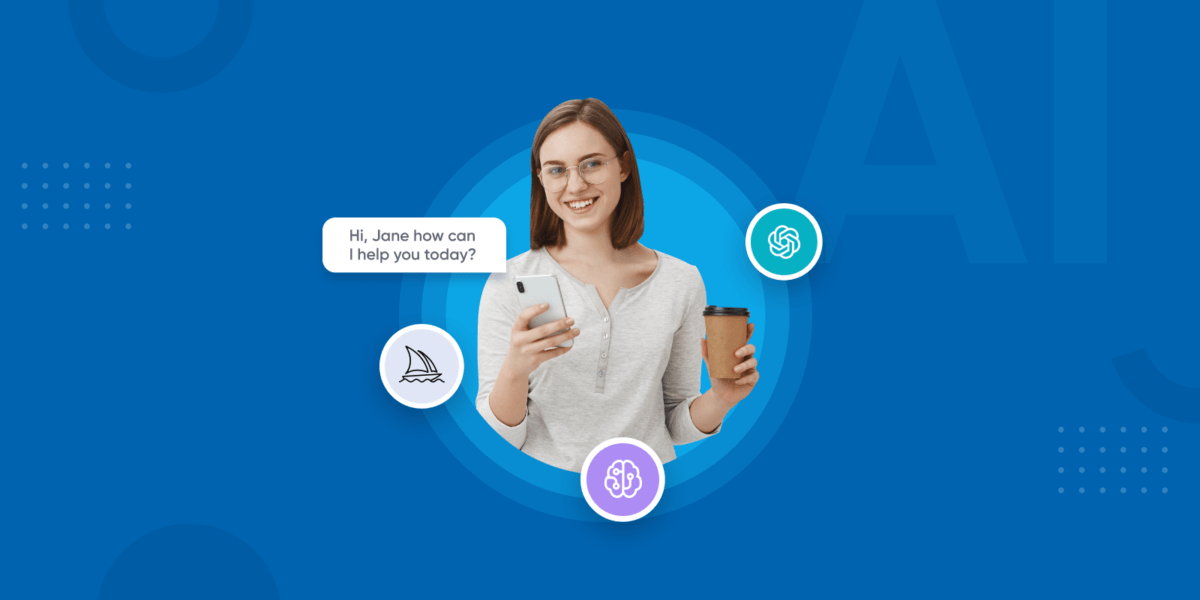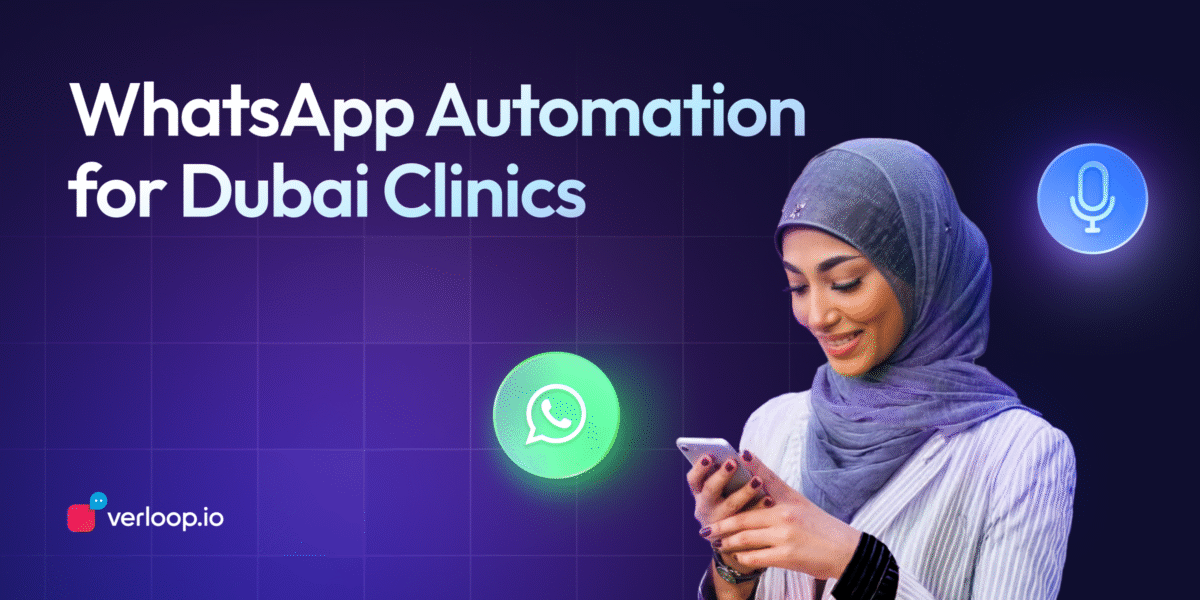Rebuild Customer Support With Generative AI Solution

Rebuild Customer Support With Generative AI Solution
The world is fascinated by artificial intelligence. We are amazed at texts generated by ChatGPT, complex images created by Midjourney, and code completions suggested by Tabnine. And these are just a few of the AI tools that make the headlines today – in fact, artificial intelligence is getting into many areas of our lives.
Such an advance of AI triggers mixed feelings – on the one hand, it has clear advantages making lots of business processes quicker, easier, and more streamlined. Its global adoption is growing and has reached 35%. On the other hand, there are fears – often well-grounded – that at the rate it is developing, AI might get out of control and become unpredictable. This opinion has been voiced by a number of technology leaders, Elon Musk and Steve Wozniak among them.
However, any artificial intelligence is only as powerful as its creators make it to be, and now AI-based tools show clear benefits for their users.
What is Generative AI and How Does it Work?
I decided to ask this question to artificial intelligence itself and see how it defines its own essence. Well, it seems the description it provided is quite fair – generative AI creates content from the available data, making it as close to that created by humans as possible.
The important thing is that in its “masterpieces”, generative AI uses the data it finds by crawling the vastness of the World Wide Web. Simply put, it does not create anything new but just compiles a new essay, image, or audio from what it finds most fitting for the task.
Still, it can be enormously useful in lots of business processes. No human can search data with the same speed and accuracy as AI does, so it can accelerate flows and reduce the number of errors. For example, it finds increasingly wide use in customer service together with its close “sibling” – conversational AI. While generative AI is designed to create various content – textual, graphic, audio, or video, – conversational AI is focused on understanding human language and providing intelligent responses. Conversational AI uses natural language processing and is implemented in various chatbots.
How Do Both Conversational AI and Generative AI Play a Role in Customer Service?
Service and support involve both communication and content, which makes them ideal for AI applications. There are a number of ways generative and conversational intelligence can enhance and complement customer service.
Automated Multichannel Customer Support
Both generative and conversational AI can take over a significant chunk of customer support communications. For frequent questions, a chatbot can provide standard answers based on the keywords it recognizes.
The more powerful features of generative AI can create automated emails, text messages, notifications, surveys, and voice communications. Its language features can help to find the tone and wording that are the most suitable to a specific situation.
As a result, AI tools can take quite a load off the agents’ shoulders giving them more time for complex case resolution and self-development.
Knowledge Management
The quality and performance of customer service largely depend on the knowledge that backs it up. With a generative AI tool capable of processing huge amounts of information almost instantly, the task of knowledge management can become much easier.
When it monitors all the company’s resources, from its internal and external knowledge base to team wikis and product descriptions, AI can supply information on any topic a support agent might need almost immediately. They will no longer need to search different resources, supply correct keywords, and try to remember where they saw the info they need right now. It will be literally at the tips of their fingers – just ask!
Enhancement of Self-Service Resources
Today, the focus is on knowledge-centered support, which meets the customers’ demand for self-service resources. Customers love it when they can find answers to their questions without talking to an agent – that’s the opinion of 67% of them. Naturally, for a superb experience, the business needs to provide top-quality resources, such as a detailed and helpful knowledge base, a set of concise answers to frequently asked questions, videos, or animated tutorials.
Do you see a potential for AI here? Given the basic information and the important keywords, the tool can generate knowledge base articles, FAQ entries, how-to’s, and other support materials. Of course, the texts and images it creates will need to be reviewed by professionals, but the bulk of the work will be done automatically.
Personalized Product Recommendations
Through analyzing tons of customer information in their conversations with support, browsing and purchase history, social media, survey responses, and demographic data, generative AI can provide valuable insights into the ways they shop.
As a result, the tool can create personalized suggestions and recommendations targeted at particular customers or groups. With certain customer service etiquette techniques that can be implemented in AI messages, communication can achieve high engagement and eventually, an increase in the conversion rate.
Deeper Customer Analytics
Being able to process and analyze massive volumes of data, artificial intelligence can find trends and patterns in customer behavior that human analysts may miss. AI can study historical data from long periods to make the most complete picture of market demand trends and their fluctuations over time.
Using such analytical data, AI can predict how the market situation may develop in the future and, thus, outline the most advantageous product development and marketing strategies.
At the same time, artificial intelligence may be useful in following and analyzing customer feedback, too. It can be set to monitor social media, review platforms, survey results, blog comments, and other customer information that is not protected by data privacy laws. Based on such studies, it can find opportunities to make a unique selling proposition by addressing a specific pain point.
Verloop.io’s Generative AI Platform
Verloop.io’s Generative AI Platform is a powerful tool that can help businesses streamline their customer service operations, improve customer satisfaction, and drive revenue growth. Therefore, Verloop.io has developed a range of compelling features using Generative AI to help engage customers quickly and easily, without the need for agents to spend time crafting lengthy messages for hundreds of customers. These features include:
AI-Summary: This feature allows agents to create a summary of the entire conversation with customers, including the conversation with the bot and previous agents. By clicking on the Summary button in their Verloop.io Live chat dashboard, agents can access internal notes of the chat and create complete notes or a summary of the conversation.
AI-Rephrase: With AI rephrasing, users can easily rewrite or rephrase words, sentences, or entire content with just a click of a button. This eliminates the need to spend time crafting messages for customers, as the AI can rewrite the content in seconds. This streamlines workflows and reduces the amount of time spent writing.
AI-Tone Adjustment: This feature enables customer support teams to adjust the tone of their message to casual, formal, or semi-casual, depending on the context of the conversation. By using the correct tone, agents can improve the customer experience and respond quickly to customers.
AI-Expand: This feature allows customer support agents to expand words and phrases to provide a cohesive answer to customers with minimal writing effort. By writing a few phrases and clicking on the expand button, agents can generate grammatically correct sentences in no time.
The Future of Generative AI is Bright
Artificial intelligence can help businesses find that delicate balance between the necessity to provide top-notch customer service and cost optimisation. AI can cover lots of content generation and communication tasks so that the agents will only need to make minor reviews and adjustments to add that “human touch” that AI still often lacks.






